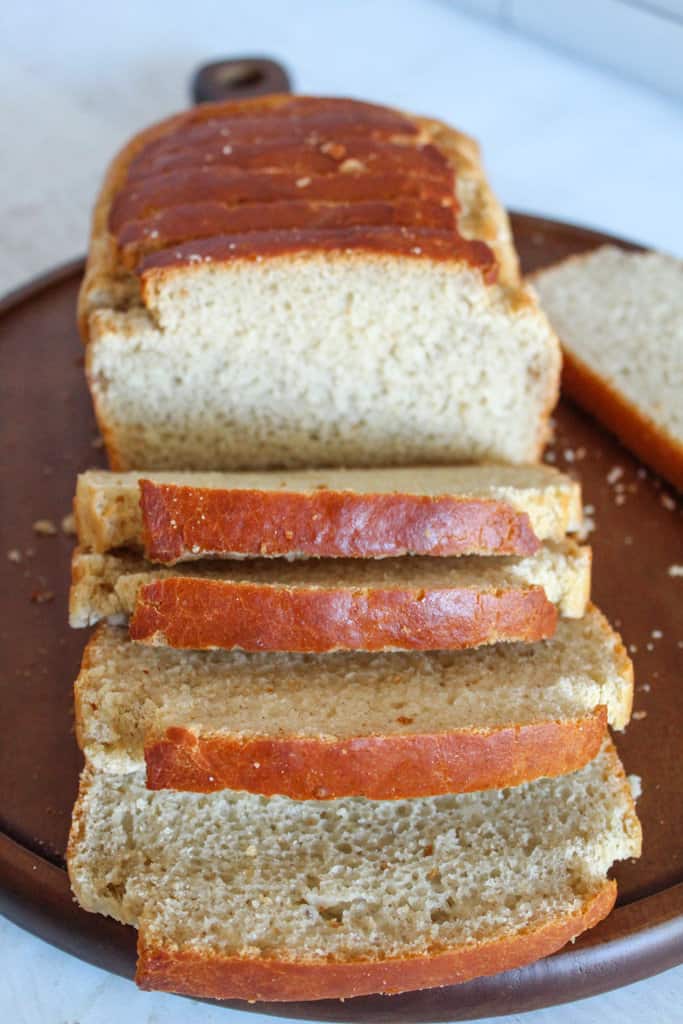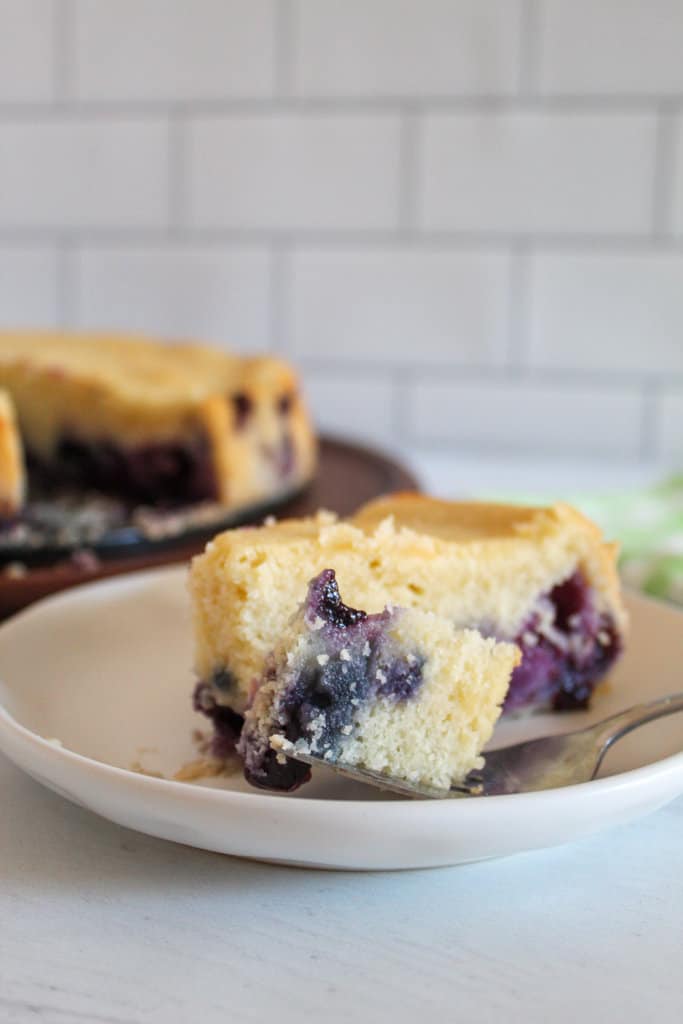Flax Seed vs Flax Meal – What’s the Difference?
Flax seeds and flax meal are very similar, but there are a few key differences you need to know before you bring either one home. Learn everything you need to know about flax seed vs flax meal to make the most of this nutritional powerhouse!

You can probably tell by the name that flax seeds and flaxseed meal both come from the same source, so how different can they be? You’re right! Flaxseeds and meal are two different forms of the same product, but there are key textural and nutritional differences you need to know about to get the biggest bang for the buck!
Table of Contents
As a gluten-free baker, I incorporate flaxseeds into many of my recipes to add fiber, flavor, and extra nutritional benefits. They also make a handy egg substitute! Flaxseeds are beneficial beyond baking and are often added as a nutritional supplement to different drinks, dressings, and more. However, you can only access the benefits of these tiny seeds when used properly. Before you add it to your diet, take a little time to understand this functional food!
Looking for more ingredient deep dives? Learn about the Best Substitutes for Psyllium Husk Powder or the Best Gluten-Free Thickening Agents!
Key Takeaways: Flax Seed vs Flax Meal
Flax is an ancient plant grown for its nutritional value and to make various household items. Due to its high fiber content, flax is most commonly used as a fiber supplement.
Flax seeds and flax meal are basically the same thing, just in different forms.
The main difference is that flax seeds are the whole form of the seeds. But, the seed coating makes it hard to absorb the omega-3 fatty acids and lignans that make flax so nutritious.
Flax meal is the ground form, which is the ideal way to consume flaxseeds to reap its benefits.
Once ground, flax meal can add a nutty flavor and soft texture to gluten-free bakes or be used as a vegan egg alternative.
What are Flax Seeds?
Flax seeds are small, oval-shaped seeds produced by the flax plant, one of the earliest cultivated plants in human history. The flax plant and its seeds have a long history of use that spans beyond food and nutrition, including making linen fabric, rope, paints, varnishes, linoleum, and more.
Nutritionally, flax seeds and flaxseed oil have been used for millennia to treat many different issues, particularly digestive problems, thanks to their high fiber content and mucilage. That’s just the start, though! These little seeds are packed with goodness and can be an incredibly powerful food to support your health.
Health Benefits
The main focus is often on fiber, as flax is made up of 40% fiber (both soluble and insoluble fiber). These can help improve digestive health, regulate blood sugar levels, reduce insulin sensitivity, reduce high blood pressure, and reduce low-density lipoprotein (the bad stuff). Consuming extra dietary fiber can help you feel full for longer and genuinely support your overall health.
Flax also contains lignans, which are phytoestrogens that may actually reduce the likelihood of some types of cancer and may resolve symptoms of menopause.
Perhaps most importantly, flax is high in alpha-linolenic acid (ALA), a very potent omega-3 fatty acid Omega-3 fats, like fish oil and other seed oils, can help reduce cholesterol levels, improve heart health, support eye health, and more. Polyunsaturated fats (PUFAs) are a key part of the Mediterranean diet, and since flaxseeds are plant-based, they’re an easy and affordable way to add more omega-3s to any diet.
Nutrition
Fortunately, you don’t need to eat a lot of flaxseeds to reap their benefits. Just 1-2 tablespoons per day can make a difference.
Plus, flaxseeds pack a punch without a lot of calories. Just one tablespoon of ground flaxseeds has:
- 37.4 calories
- 1.28 g protein
- 3 grams of fat
- 2 grams of carbohydrates
- 2 grams of dietary fiber
You may see different types of flaxseeds at your store, like brown or golden flaxseeds. Both are healthy, but brown flaxseeds have more of the polyunsaturated fats (ALAs) and antioxidant properties that you may be looking for.
Uses
Most people consume flaxseeds for their nutritional benefits, but they can also be very useful in the kitchen. Add a scoop to your daily smoothie, shake some into homemade salad dressings, or use their mucilaginous texture and high fiber content to improve the quality of your baked goods!
- Bake into gluten-free breads for extra fiber and nutrition
- Add moisture and a soft texture to your favorite breads and muffins
- Use as a vegan egg alternative for gluten-free baking
- Use as a replacement for xanthan gum to thicken gluten-free flour blends
I often add flaxseeds to this Soft Flaxseed Bread to increase my consumption of omega-3 fatty acids, and they give these Flaxseed Muffins a light, nutty flavor and lots of extra fiber.

What is Flax Meal?
Clearly, flaxseeds can be a powerful way to improve your health, but there’s one problem: digestibility. Their outer shell is so fibrous that it can easily pass through your digestive tract without breaking down. This means you can’t access all those essential fatty acids and lignans, which defeats the purpose!
To get the most nutritional benefit from flax seeds, they should first be ground into a powder and research shows that freshly ground flaxseeds have the highest concentrations of ALA and lignans.
Note about Freshness
You’ll often find pre-ground flaxseeds available in packages on grocery store shelves, but remember that fresh is best. Once ground, the ground flaxseeds have a short shelf life and should be used within just a few weeks or months. Even better, grab a bag of whole seeds and grind them yourself!
How to Make Flax Powder
If you can’t get freshly ground flaxseeds at your local grocery store, it’s best to grind them at home. You can use either raw or heat-processed flax seeds, and you’ll need a coffee grinder or a food processor to pulverize the seeds quickly and easily.
Once your flax seeds are ground, they’ll start to oxidize and go bad faster, so only process what you need.
Storing Flax Seeds & Powder
- Whole flaxseeds can be kept at room temperature for 4-20 months.
- Freshly ground flax meal should be used within a few weeks or months.
One easy option is to keep a bag of raw flax meal in your fridge, then grind what you need for a few weeks at a time. Store the freshly ground flax powder in a jar or other airtight container in the fridge to use as needed.
Best for Baking
For all purposes, it’s best to use flaxseed powder, ideally freshly ground. Either purchase freshly ground flax meal at the store or keep a stash of whole flaxseeds on hand to grind as needed.
On occasion, you will see people top their loaves of sandwich bread with whole flax seeds, chia seeds, and other seeds, but remember that you can’t access the benefits of flaxseeds as well unless they are ground into a powder. Using the whole seeds is generally just a fun decorative touch.



